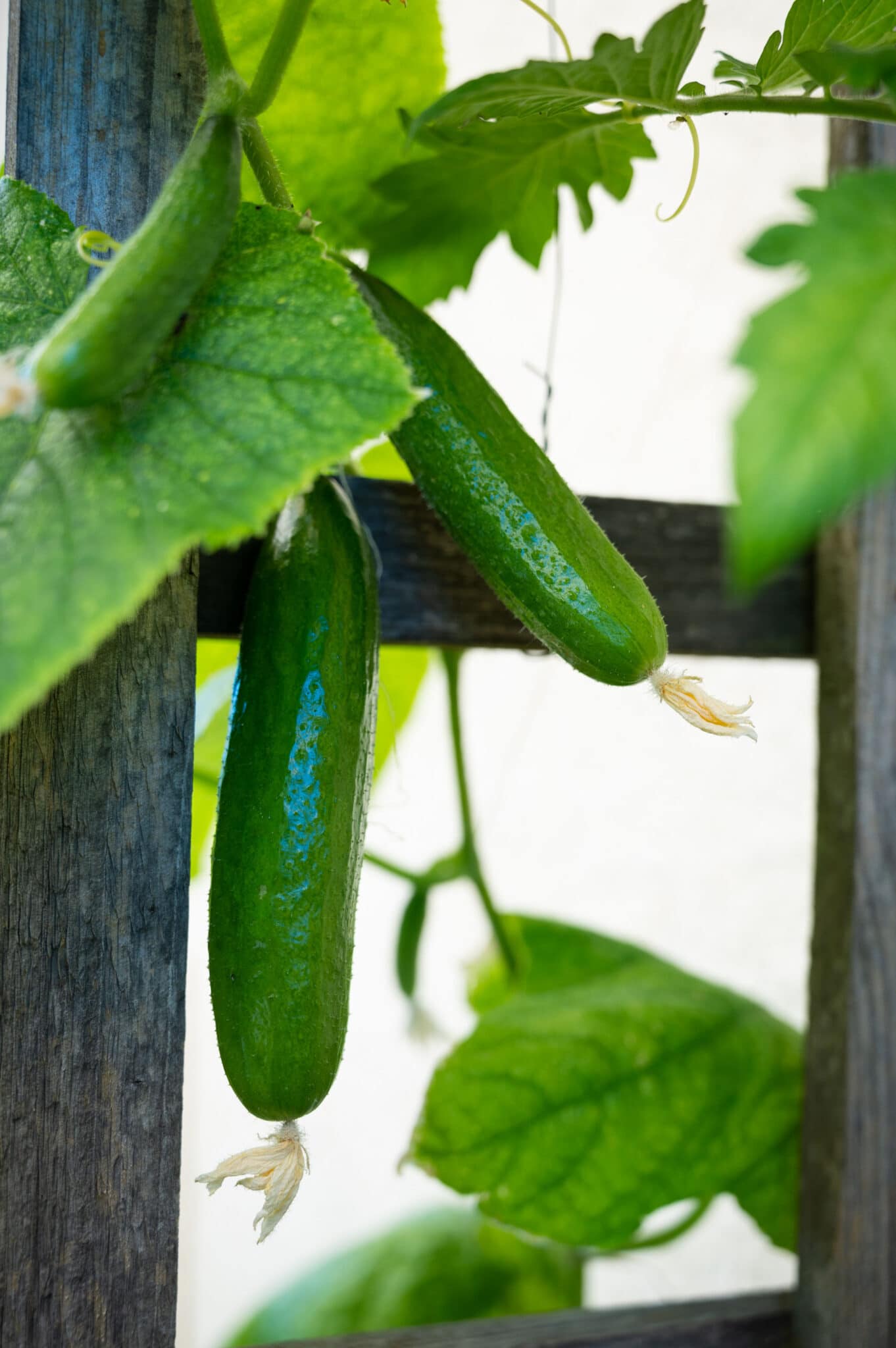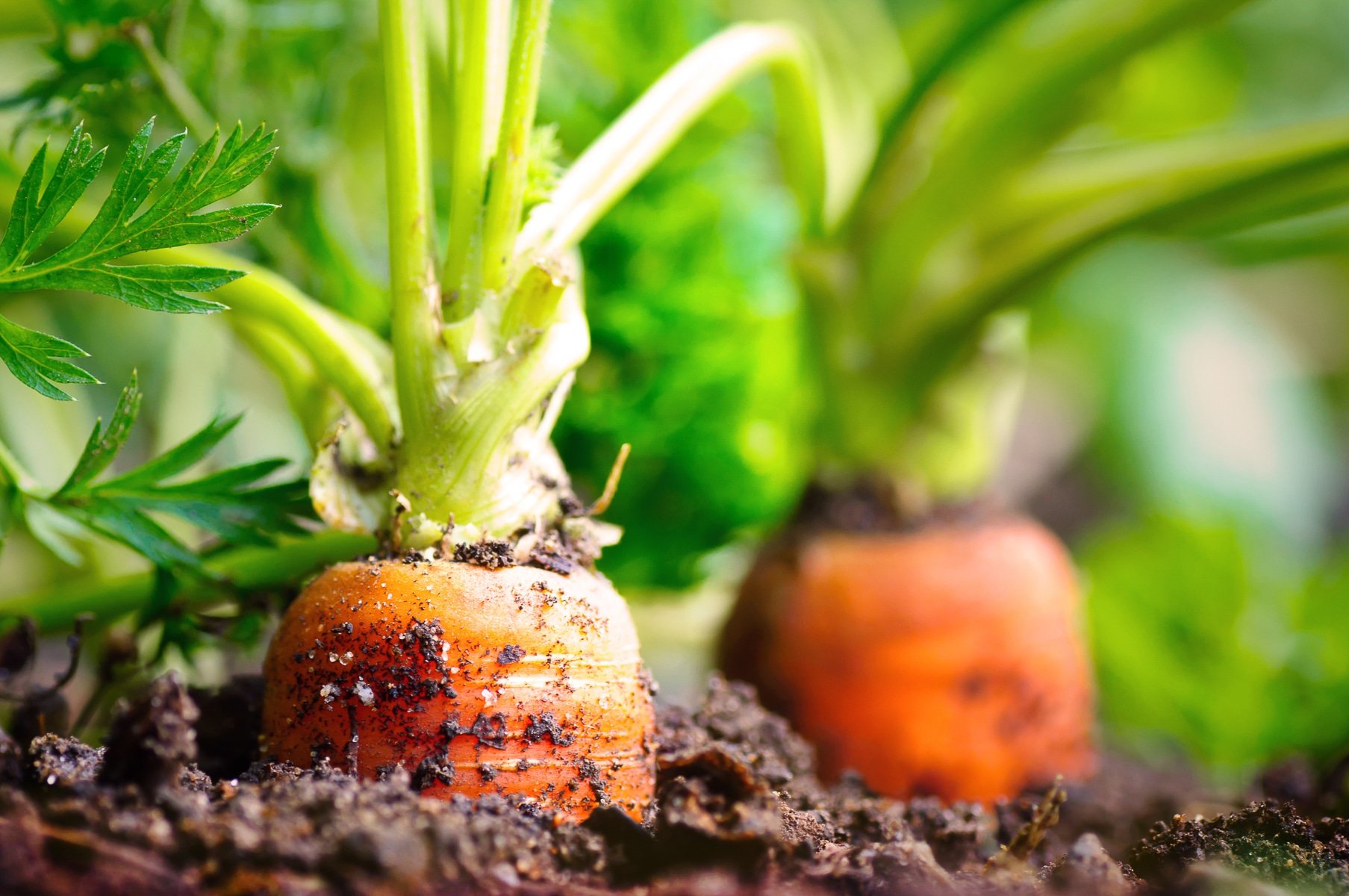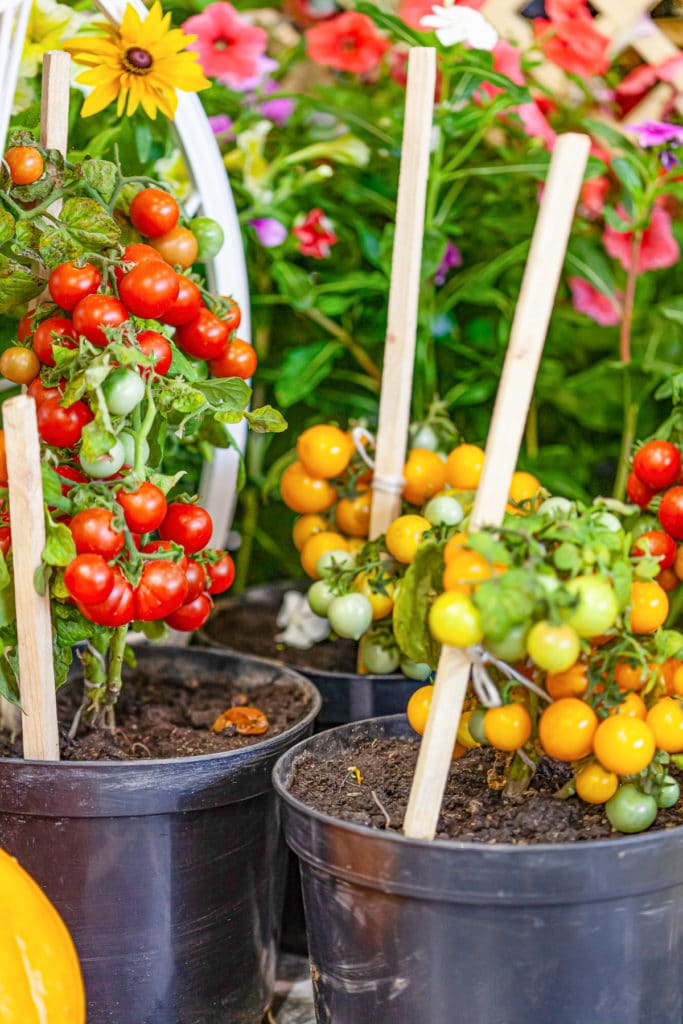Vertical Vegetable Garden – High Yields In Less Space
If you want to grow more vegetables and produce but have limited space, then a vertical vegetable garden might be the perfect solution. This article will delve into vertical vegetable gardens and provide tips, tricks, and inspiration to help you create a thriving vertical garden oasis. Join us as we explore the potential of vertical growing and learn how to grow fresh produce, even in small spaces.

Does a vertical vegetable garden work?
A vertical vegetable garden is a perfect solution for a gardener with limited space. Growing up and not out, you can pull your heavy-spreading vegetables and fruit off your raised beds and have them climb, freeing up space to plant more food. There are many great ways to grow food vertically in a garden and many great benefits.
The Many Benefits Of Growing A Vertical Vegetable Garden
There are so many excellent benefits to growing vertical veggie gardens:
Maximize Space
When you grow a vertical vegetable garden, you save space for planting more crops.
Growing large, sprawling crops like pumpkins and squash, cucumber, and zucchini can take up a lot of ground space. So get them up off your beds and growing vertically, and claim back all that growing space for more food!
Better Air Circulation
A vertical vegetable garden will have much-improved air circulation. With the plants up off the ground, it helps air to circulate under the leaves.
Squashes, melons, and cucumbers all can be susceptible to powdery mildew, which is a soil-borne disease spread to the leaves from the ground. You will significantly reduce the instances of powdery mildew on these crops if you grow them in vertical space.
Easy Harvests
It is easier to find cucumbers and zucchini growing on a trellis than to see them lying on the ground.
Harvesting vertically also reduces bending and stooping or crawling around the ground to pick and find vegetables.
Growing a vertical garden will also help keep the fruit and vegetables clean. If you ever saw a pumpkin or a melon growing on the ground, the fruit ends up marked. Sometimes that spot can get soft and be an entry point for insects. If you grow these vegetables vertically, you don’t have to worry about that problem.
Provide Shade
If you are like me and your garden is 100% in full sun, it does make growing cool-weather crops a challenge.
But when you add trellises to your vegetable garden, especially ones for large vining plants like squash, cucumber, and pumpkins, you create a shaded area behind the frame that is perfect for growing salad greens like spinach and lettuce.
- Learn More: See our list of 28 vegetables that grow well in the shade for ideas of what you can plant behind and under your vertical garden structures.
What Grows Well In A Vertical Vegetable Garden?
There are several crops you will grow well in a vertical vegetable garden:
Vining Tomatoes and Vining Cherry Tomatoes
There are two different types of tomatoes, determinate and indeterminate. Determinate tomatoes are bushy tomatoes that only grow to a certain height. They set and ripen all the tomatoes simultaneously (give or take a few days). Indeterminate tomatoes are vining tomatoes that grow large and sprawl. They set and ripen through the growing season until the nights start to get cold in the fall.
Vining tomatoes work exceptionally well for trellises and for growing them vertically.
Tomatoes are not naturally vining plants; they do not grab on top or climb independently. Therefore, they will need additional support to climb a trellis.
- Learn More: You can grow tomatoes in containers successfully if you provide vertical support. See our guide for growing cherry tomatoes in pots!

Pole Beans, Vining Beans, and Peas
Pole beans & peas are the quintessential vertical garden plant. Beans want to climb and will climb on almost anything from poles to trellises.
It makes the beans easier to find and harvest when grown vertically and keeps them looking fresh and clean.
Vertical bamboo gardens are perfect for growing lightweight plants like peas and beans.
- Learn More: You can grow beans and peas in containers so long as you provide a trellis. See our guides on growing beans and peas in pots for healthy abundant harvests.

Cucumbers
I always grow my cucumbers on simple a-frames built out of wood. I love the way the cucumbers look growing in a vertical vegetable garden. They fill out the trellis quickly, and the vines and leaves look lovely.
Cucumbers will naturally climb, but they will need help with support once the cucumbers are set. The fruit can be heavy and can pull vines down, so support your vines and harvest cucumbers regularly to reduce weight.
Melons, Zucchini Squash, and Pumpkins
You can grow two squashes in your vegetable garden: bush and vine. You will want to ensure your squash plants are vining and suitable for a vertical vegetable garden.
Please ensure that your trellis is strong. I mean strong. We use a 2×4 frame with cattle panels in our raised beds. Since melons, squash, and pumpkins can grow big and heavy, you must ensure your supporting system will make it through the season.
- Learn More: See the steps required for growing pumpkins in containers with trellises.
- Growing zucchini in pots for big harvests.

Support and Care Tips
It’s vital to support set fruit early on, so they do not grow heavy and break off. We have found adding small hammocks out of fabric work very well. We like to use pantyhoses because they are stretchy and allow water to drain off without pooling.
Using a drip watering system with your squash, pumpkins, and melons is also good to avoid overwatering any adjacent vegetables.
Cucuamelons
Cucuamelons are one of our new favorite vegetable crops. These tiny cucumber-looking fruits should be grown on a trellis system. They like to climb, and their small fruits are much easier to spot and find when raised off the ground.
Cucamelons also do not cross-pollinate, so you can grow them with your cucumbers and squash and still harvest seeds at the end of the season without cross-pollination concerns.
Grapes
You will want to grow your grapes up a permanent structure. A permanent system is required because grapes will keep growing and need a permanent space as they do not pull up and transplant well.
Grow your grapes on arbors, arches, pergolas, and permanent trellis structures.
Types of Vertical Planters and Structures
There are many ways to grow a vertical vegetable garden; from a trellis of cucumbers to a hanging basket filled with strawberries!
Trellis
Trellises are the most accessible and valuable garden structures for a vertical vegetable garden. (In my humble opinion). They only need a few pieces of wood, netting, or chicken wire to give the plants something to climb on, and all fruit and vegetable plants listed in this article will climb on a simple garden trellis.
Trellises work best in containers or raised beds as they can be connected to the bed for more stability.
Once your trellis goes up and you plant your climbing vegetables consider growing salad greens behind the trellis, where they will be shaded from the midday sun.

A-frames
We like to grow our cucumbers on A-frames. A-frames are like they sound, two trellises attached at the top that fold into an A shape.
A-frames are freestanding, but it is good to secure them into the ground. One benefit to a-frames is you can fold them for winter storage.
Obelisks
Obelisks are fancy support structures that work well for vining plants like beans, peas, and nasturtiums or as a supporting structure for bush varieties of tomatoes, eggplant, zucchini, and peppers, to name a few.
- Related: Check out our full guide to growing climbing nasturtiums!
If you’re starting a potager-style garden, you will want to add a few obelisks to your plan.

Maypoles
Fashioned after the traditional maypole used in many European May Day celebrations, this support solution has strings that radiate from the center of the pole to support climbing plants.
Grow beans of all vining types and peas up your maypoles!
Arbor
What is the purpose of a garden arbor?
An arbor is a vertical support structure in a landscape or gardening that can provide privacy, shade, and support to grow crops. It makes a lovely entranceway to any vegetable plot and can be used to grow grapes, squash, melons, cucumbers, and zucchini (to name a few).
Bamboo Poles
How do you use a bamboo pole in the vertical vegetable garden?
You can use bamboo to construct a simple teepee for climbing plants.
To make a bamboo teepee, insert one end of three or more bamboo poles into the soil, then connect them at the top with twine.

Hanging Baskets
Hanging baskets are a much-overlooked support system for a vertical garden. But there are so many beautiful vegetables and fruit you can grow in a hanging basket.
To grow vegetables and fruit in a basket, use fresh fertile garden soil amended with water-retaining additives such as vermiculate.
Strawberries, small peppers, small tomatoes (varieties like Tiny Tim), and lettuce make lovely additions to hanging baskets.

Window Boxes
Like hanging baskets, use fresh, fertile potting soil with lots of organic matter amended with vermiculite for your vertical vegetable garden.
You can grow strawberries, cherry tomatoes (look for small bush varieties), tiny peppers, lettuce, Paris carrots, radishes, kale, and spinach, to name a few.
Planters with Support Systems
You can grow a vertical garden with homemade planters or planters of any size, so long as they have a support system attached.
Ensure that your planters have good potting soil and that the planter has drain holes.
You can use anything from bamboo poles to tomato cages to grow crops in planters.
Planters with support make an excellent indoor vertical vegetable garden.

Hanging Garden
A hanging garden is a unique vertical garden. You can use walls, ladders, pocket gardens, shelves with pots hanging from a string, anything!
You can get creative with hanging gardens indoors and out, but it’s a great way to add more food to a space without digging into the ground.

How to Keep Your Vertical Garden Healthy
Soil and Fertilization Tips
To ensure the success of your vertical vegetable garden, it’s essential to start with healthy soil. Use a well-draining potting mix enriched with compost to provide crucial nutrients for your plants. Additionally, consider regular fertilization with organic fertilizers to support vigorous growth and abundant harvests. Testing the soil pH and adjusting it to the optimal range for your chosen crops can further enhance plant health and productivity.
Seasonal Considerations
Understanding the seasonal requirements of your crops is key to maximizing yield in your vertical garden. Plan your planting schedule based on local climate conditions and the specific needs of each vegetable variety. In cooler months, focus on cold-hardy crops like lettuce and kale, while warmer months are ideal for heat-loving plants such as tomatoes and peppers. Rotate crops annually to prevent soil depletion and reduce the risk of pests and diseases.
Pest and Disease Management
Effective pest and disease management are critical for maintaining the health and productivity of your vertical garden. Implement integrated pest management strategies, such as attracting beneficial insects and using organic pest control methods like neem oil or insecticidal soaps. Regularly inspect your plants for signs of pests or diseases, and promptly address any issues to prevent widespread infestations. Companion planting with pest-repelling herbs and flowers can also help deter unwanted insects naturally.
Learn More: See our complete guide Plants That Repel Bugs & Pests Away From the Garden.
Environmental Sustainability
Promoting environmental sustainability in your vertical garden benefits your plants and the planet. Practice water conservation by using drip irrigation systems and capturing rainwater for irrigation. Embrace organic gardening practices, such as mulching with compost to improve soil structure and fertility while reducing weed growth. Consider incorporating native plants and creating a habitat for beneficial wildlife to support biodiversity and ecological balance.
Community Engagement
Engaging with your local gardening community can enrich your vertical gardening experience. Joining gardening clubs, attending workshops, and participating in community garden projects provide opportunities to learn from experienced growers, share knowledge, and exchange resources. Collaborating with neighbors on shared garden initiatives fosters a sense of camaraderie and strengthens community bonds while promoting urban sustainability and food security initiatives.
Expert Tips
- Select the Right Plants: Opt for vegetables well-suited for vertical growth, such as tomatoes, cucumbers, peppers, beans, and peas. Choose varieties specifically bred for container or vertical gardening.
- Invest in Quality Support: Strong trellises, stakes, cages, and wall-mounted systems support vertical growth. Ensure they are sturdy enough to withstand the weight of mature plants and the elements.
- Mindful Placement: Place your vertical garden in a location that receives adequate sunlight for the selected vegetables. South-facing walls or areas with at least six hours of daylight are ideal.
- Optimize Soil and Drainage: Use lightweight, well-draining potting mix for containers or ensure proper drainage for wall-mounted systems. Regularly check moisture levels to prevent waterlogging or drying out.
- Train Plants Early: Encourage vertical growth by gently guiding young plants along supports. Secure vines or stems with soft ties to prevent damage.
- Regular Pruning and Maintenance: Trim excess foliage and prune plants to promote airflow and prevent overcrowding. Regularly inspect for pests and diseases, addressing any issues promptly.
- Utilize Companion Planting: Pair compatible plants to maximize space and deter pests naturally. For example, interplanting basil with tomatoes can enhance flavor and repel pests.
- Incorporate Vertical Layers: Utilize all available vertical space by incorporating hanging baskets, tiered shelving, or stacking pots. This allows for greater variety and increased yield within a limited footprint.
- Water Wisely: Employ drip irrigation systems or self-watering containers to ensure consistent moisture levels, especially during hot weather. Mulching can help retain moisture and regulate soil temperature.
- Harvest Continuously: Regularly harvest mature vegetables to encourage continuous production and prevent overcrowding. Check plants daily during peak growing seasons.
FAQ
A vertical vegetable garden is a gardening technique where vegetables are grown upwards on structures like trellises, stakes, or walls, maximizing space and allowing for high-density planting.
Vertical vegetable gardening maximizes space, increases yield, reduces soil erosion, enhances air circulation around plants, minimizes pests and diseases, and makes harvesting and maintenance easier.
Common pests include aphids, spider mites, and caterpillars, while diseases like powdery mildew and fungal infections can also occur. Regular monitoring, proper spacing, and good airflow help prevent infestations and diseases.
Vertical gardening offers a space-efficient solution for growing a variety of vegetables. Tomatoes, cucumbers, peas, beans, and peppers are excellent choices for vertical growth, benefiting from trellises or stakes that promote healthier plants and easier harvesting.
While vertical gardens require regular maintenance like any other garden, they may need extra attention to watering due to faster evaporation and ensuring proper plant support as they grow.
Grab Our Ultimate PRINTABLE Garden Planner
With 39 pages of planning and organizing and the ability to customize your planner with the pages you need, you won’t need another planner for the rest of your gardening life!
$4.99 US

Final Remarks
Vertical vegetable gardening offers an innovative solution for maximizing space and yield, making fresh produce accessible even in the most confined environments. By incorporating the expert tips, selecting suitable crops, and embracing sustainable practices outlined in this article, gardeners can create thriving vertical gardens that beautify spaces and provide a bountiful harvest year-round.
Related Posts

Author: Laura Kennedy
Writer & Owner of Little Yellow Wheelbarrow










